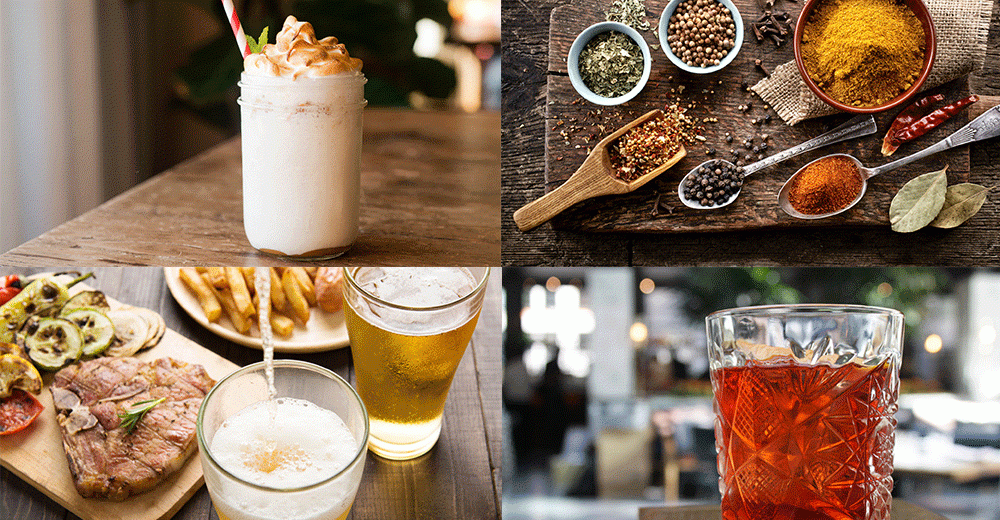1 12
1 12
Off-the-beaten-path meats. “Root-to-leaf” dishes that feature vegetables in their entirety. “Fat-washed” cocktails that add flavor and viscosity.
These are the hot trends that will lead us into 2017, according to the culinary and beverage team at Kimpton Hotels & Restaurants, which just released its annual trend report.
Kimpton surveyed its chefs, sommeliers, general managers and bartenders across about 70 restaurants, bars and lounges in about 30 U.S. cities, as well as some tastemakers, to find out what’s hot.
Alex Taylor, Kimpton’s senior vice president of restaurants and bars, says these are the trendsetters and innovators who are always on the hunt for the flavors and techniques that will stand out from the crowd.
Some, like the nose-to-tail trend of using whole animals, have been around for a while, but continue to inspire innovation, says Taylor. Others are more cutting edge.
Here’s what they see on the horizon.
Whether it’s an ice cream sundae made with blackberry chartreuse or a sour cherry-mascarpone frozen push pop, chefs are updating some childhood favorites.
SaltRock Southwest Kitchen in Sedona, Ariz., for example, has a S’Mondae with vanilla ice cream, Mexican chocolate syrup, house-made marshmallows, spiced coffee and a house-made graham cookie. At Finch & Fork in Santa Barbara, Calif., chef James Siao serves a Fire-Roasted Milk Shake made with caramelized banana ice cream, crushed graham cracker, salted caramel and toasted meringue.
Chefs have been using everything but the moo for years, but Taylor observes that the trending animal parts this year are things like bone marrow, chicken skin and pig cheeks.
Vol. 39 in Chicago, for example, is using chicken skin crusted with quinoa and marcona almonds in a way that resembles chips. “You could use it for anything like you’d use a pita or tortilla chips,” Taylor says. “It adds a layer of unctuousness.”
At Geraldine’s in Austin, chef Stephen Bonin serves a Pig Face Candy Bar appetizer featuring a country-style pate bruléed with raw sugar and accompanied by a pear chow chow and house-made crackers inspired by Cheez-Its.
Hummus. Olive oil-charred octopus. Moroccan lamb chops with tomato-cucumber fattoush and lemon yogurt. The Mediterranean style of eating has long been embraced as more healthful, but now Taylor sees dishes becoming less provincial and blending various cultures.
At the Italian Tre Rivali in Milwaukee, for example, chef heather Terhune serves hummus flavored with rosemary and warm pita, and the dish fits right in, notes Taylor. At the all-American Shaker & Spear in Seattle, spicy chips are served with a yogurt dip.
In the name of sustainability, chefs are using all parts of vegetables. Doing so reduces waste, but also adds unique flavor.
The trend is fueled in part by the use of more local ingredients, so root vegetables tend to arrive with fresher greens still attached. Radish greens, for example, are ending up in salads. The traditional celery root puree is back, and carrot tops are ending up as pesto. “I’m amazed it took this long to learn not to throw that stuff in the trash,” Taylor says.
The paleo crowd is getting bored with tenderloin, so chefs are looking beyond traditional livestock at options like ostrich, venison, bison and elk. “These meats have a very distinct gamey flavor that people are demanding right now,” Taylor says.
JSix in San Diego, for example, serves a venison tartare with beets, rye croutons, cured egg yolk, mustard and bourbon-barrel-aged Worcestershire. At Three Degrees in Portland, Ore., chef Lauro Romero offers smoked elk carpaccio with radish, preserved lemon aioli and parmesan.
Celebrated for its health benefits, turmeric continues to be in demand, but so are the spices cardamom and cumin, said Taylor. Chef Ed Witt at The Katherine Brasserie in Winston-Salem, N.C. serves curried cauliflower with pickled carrots, raisins and pistachios. And a top seller at Dirty Habit in Washington, D.C., is a curry shrimp with coconut milk, eggplant, cucumber salad and rice.
Cocktails are getting more culinary with ingredients like roasted grapes, salt-roasted plantains, smoked tomato water, pureed red pepper or even pickling brine, Taylor says.
At Geraldine’s, for example, the savory Beetnik involves Ford’s gin and lemon combined with a red-beet shrub made with vinegar, sugar, pink peppercorns and fennel. In Chicago, Boleo’s Ponche de Champagne includes salt-roasted plantains, cana brava, passion fruit, lime juice and angostura bitters.
It’s a technique that involves infusing liquor with a fatty ingredient. Bacon-washed bourbon has been popular for a while, but now mixologists are getting creative with some non-meat fats, like coconut milk and olive oil, says Taylor. “It not only adds flavor, it adds a subtle viscosity.”
The Coconut Negroni at Boleo features coconut-fat-washed kappa pisco with Campari sweet vermouth. The Patty’s Punch at Three Degrees in Portland involves vodka that has been milk washed and infused with peppermint tea. The cocktail is spiked with baking spice syrup and lemon.
Think South American. The Caipirinha is back but this time with alternative liquors like mezcal, or spiced with jalapeno-infused cachaça or serrano-chili syrup. “There are only one or two outstanding cachaça producers in the U.S., so you’re taking the idea of a traditional Caipirinha and using other ingredients to make it new,” Taylor says.
Meanwhile, Red Star Tavern in Portland is using jalapeno-infused cachaça mixed with lime juice, pineapple shrub and allspice demerara syrup, with a barspoon of mezcal and an apple slice, to make the Zika Repellant.
Wine and cheese aren’t going anywhere, Taylor notes, but expect to see more pairings like oysters and gin, or sherry and fries. “You’re seeing Japanese sake paired with any cold shellfish, or sherries with South American dishes,” he adds.
Fermentation has been around a while on the culinary side, but now mixologists are making their own ingredients at the bar to pack extra punch, like kombucha, ginger beer or keffir. “People are putting the time and effort and passion into it and getting these really incredible products,” adds Taylor.

